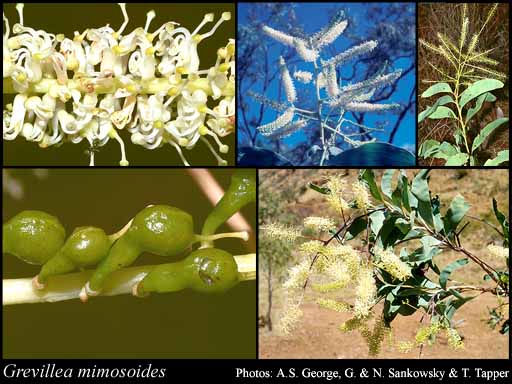- Reference
- Trans.Linn.Soc.London 10:177 (1810)
- Conservation Code
- Not threatened
- Naturalised Status
- Native to Western Australia
- Name Status
- Current
Straggly erect shrub or tree, 2-10 m high. Fl. green-yellow/cream-white, Aug to Sep. Clay loam, loam or sandy soils on basalt, laterite or sandstone. Rocky hillsides, often associated with watercourses.

Scientific Description
Trees, 2-10 m high; branchlets glabrous or hairy, with a glaucous bloom or not glaucous. Leaves alternate, 150-300 mm long, 12-45 mm wide, hairy or glabrous, on the adaxial or abaxial surface, the hairs straight; lamina flat, widest around the middle, entire, the margins flat. Inflorescences terminal, white or yellow; pedicels 0.5-1.5 mm long. Perianth 3-4 mm long; tepals all free after flower opens, glabrous; ovary glabrous, stipitate, the stipe 1-13 mm long; pistil 5-9 mm long, white or yellow, pollen presenter conical or oblique, style glabrous. Follicles glabrous, not viscid, dehiscent, 1-3 mm long. Flowers in July, August or September. Occurs in the Northern (N) Botanical Province(s), in the Northern Kimberley (NK), Central Kimberley (CK), Dampierland (DL) or Ord-Victoria Plains (OVP) IBRA subregion(s).
Distribution
- IBRA Regions
- Central Kimberley, Dampierland, Northern Kimberley, Ord Victoria Plain.
- IBRA Subregions
- Berkeley, Fitzroy Trough, Mitchell, Mount Eliza, Pentecost, Purnululu.
- IMCRA Regions
- Kimberley.
- Local Government Areas (LGAs)
- Derby-West Kimberley, Halls Creek, Wyndham-East Kimberley.